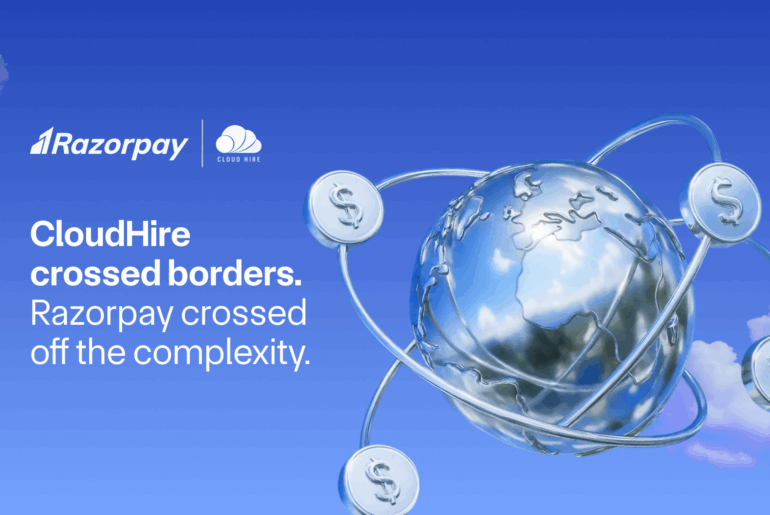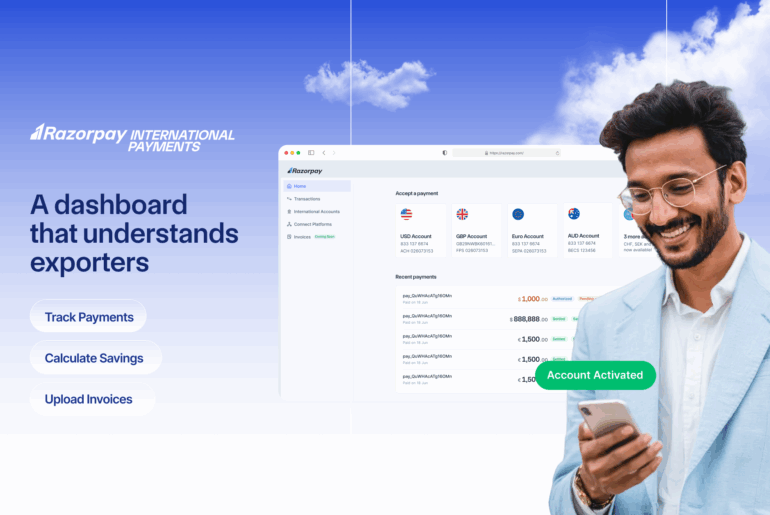Table of Contents
What is an Account Aggregator?
An account aggregator is an RBI-regulated entity that helps individuals securely and digitally access and share information from one financial institution they have an account with to any other regulated financial institution in the AA network. The data sharing is based on an individual’s explicit consent.
Here’s an account aggregator example to illustrate the concept better:
Imagine you want to apply for a loan from a bank. Traditionally, you would need to provide various documents like bank statements, salary slips, tax returns, etc. With an Account Aggregator, you can simply give consent to your loan provider to access this information digitally from your banks, mutual fund houses, insurance providers, etc. The loan provider gets access to your data in real-time and can process your application faster.
Role of Account Aggregators in Financial Services
Account Aggregators play a pivotal role in streamlining data sharing in the financial services ecosystem. They act as intermediaries that facilitate the consented, secure flow of financial data between Financial Information Providers (FIPs) like banks and Financial Information Users (FIUs) like lending institutions.
Key roles of Account Aggregators:
1. Consent Managers:
AAs manage user consent for the sharing of financial data. No data can be shared without the explicit consent of the individual.
2. Data Conduits:
AAs are data blind pipes. They cannot read, process, or store the data. They only transmit encrypted data between FIPs and FIUs.
3. User Empowerment:
AAs put the user in control of their financial data. Users decide what data to share, with whom, and for how long.
4. Ecosystem Enablers:
By enabling seamless, digital data sharing, AAs are key enablers for innovative financial services and use cases.
AAs have the potential to revolutionise how financial services are delivered. They can enable faster credit decisions, improved wealth management, personalised products, and inclusion of the underserved.
How Account Aggregator Works? A Step-by-Step Guide
Here’s a step-by-step guide on how the Account Aggregator framework functions:
1. Registration:
A customer registers with an Account Aggregator of their choice.
2. Link Accounts:
The customer links their various financial accounts (banks, mutual funds, insurance, etc.) with the AA.
3. Consent Request:
When a Financial Information User (FIU), say a lending bank, requires access to the customer’s data for processing a loan, it places a request with the AA.
4. Consent Approval:
The AA notifies the customer of the FIU’s data request. The customer reviews the request and provides their consent along with the time period for which the consent is valid.
5. Data Fetch:
The AA sends the data request to the relevant Financial Information Providers (FIPs) – banks, mutual funds, etc.
6. Encrypted Data Flow:
The FIPs send the requested data to the AA in an encrypted format. The AA consolidates this data and shares it with the FIU, again in an encrypted format.
7. Data Usage:
The FIU uses the data for the purpose it was intended for, say loan underwriting. No data is stored with the AA and it cannot read or process the data.
Throughout this process, the user is in control and provides explicit consent for every data-sharing request. The AA acts as a secure conduit for encrypted data flow between FIPs and FIUs.
Key Features of Account Aggregators
Account Aggregators come with a host of features that make them secure, user-friendly, and powerful enablers of data democracy. Here are some of the key features:
1. Real-time Data Access
AAs enable real-time access to financial data. As soon as data is updated with an FIP, it is available for sharing with FIUs via the AA. This enables faster decision-making.
2. Multi-institutional Connectivity
AAs can connect to multiple FIPs and FIUs, enabling users to share data from multiple sources in a single window.
3. Data Security and Encryption
All data shared via AAs is fully encrypted. AAs themselves cannot read, process, or store the data.
4. User Consent Management
AAs operate on an explicit consent architecture. No data can be shared without the user’s consent. Users can also revoke consent anytime.
5. Personalised Financial Insights
By consolidating financial data from multiple sources, AAs can provide users with personalised financial insights and recommendations.
6. User-friendly Dashboard
Most AAs provide intuitive, user-friendly dashboards for users to manage consent, and view data sharing history and linked accounts.
7. Seamless Integration with Financial Services
AAs can integrate with various financial services apps enabling users to share data seamlessly for availing services.
8. Customisable Data Sharing Preferences
Users can customise their data-sharing preferences with AAs. They can choose what data to share, with whom, and for how long.
9. Analytics and Reporting Tools
Some AAs provide analytics and reporting tools for users to get detailed insights on their financial data.
10. Secure Data Storage
AAs use secure, encrypted data storage protocols to ensure user data remains safe even in the event of a breach.
These features make Account Aggregators powerful yet secure tools for consented financial data sharing.
Benefits of Using an Account Aggregator
Using an Account Aggregator comes with multiple benefits for users. Here are some of the key advantages:
1. Time-Saving
AAs eliminate the need for physical document submissions and multiple visits to financial institutions. This saves a significant amount of time.
2. Enhanced Financial Planning
By providing a consolidated view of all financial data, AAs enable better financial planning and decision-making.
3. Improved Credit and Loan Assessments
AAs enable lenders to access real-time, verified financial data of users. This leads to faster and more accurate credit assessments.
4. Convenience and Accessibility
AAs make financial data sharing a fully digital, remote process accessible from anywhere, anytime.
5. Comprehensive Financial Overview
AAs provide users with a single-window view of all their financial data – bank accounts, investments, insurance, loans, etc.
6. Better Decision-Making
With access to comprehensive, real-time financial data, users can make more informed financial decisions.
7. Simplified Account Management
AAs allow users to manage multiple financial accounts through a single interface, simplifying financial management.
8. Increased Transparency
AAs provide complete transparency on what data is being shared, with whom, and for what purpose. Users are in control throughout.
9. Personalised Financial Products
By analysing consented user data, financial institutions can offer personalised products and services best suited to individual needs.
10. Streamlined Financial Monitoring
AAs make it easy for users to monitor their financial health by providing real-time data and insights in a single place.
These benefits make Account Aggregators a powerful tool for users to manage and leverage their financial data effectively.
How to Use an Account Aggregator?
Using an Account Aggregator is a simple and straightforward process. Here’s a step-by-step guide:
1. Register for an Account Aggregator service:
Choose an RBI-licensed AA and register for their service using basic KYC details.
2. Link your financial accounts:
Link all the financial accounts you want to share data from – banks, mutual funds, insurance, tax platforms, etc.
3. Grant necessary permissions:
Grant the AA permission to fetch your financial data from the linked accounts.
4. Verify your identity:
Complete a one-time identity verification as per AA’s protocols for security purposes.
5. Access your financial dashboard:
Log in to your AA dashboard to get a consolidated view of your financial data from linked accounts.
6. Set data sharing preferences:
Use the dashboard to set your data sharing preferences – what data to share, with whom, and for how long.
7. Use insights for financial planning:
Make use of the financial insights and recommendations provided by the AA for better financial planning.
8. Monitor data sharing:
Keep track of who you have shared your data with and revoke consent if needed.
9. Manage linked accounts:
Review and manage your linked accounts periodically. Remove accounts you no longer wish to share data from.
10. Seek help when needed:
Don’t hesitate to reach out to your AA’s customer support if you face any issues or have queries.
By following these simple steps, you can start leveraging an Account Aggregator to securely share your financial data and avail various benefits.
Regulatory Framework for Account Aggregator
Account Aggregators operate within a well-defined regulatory framework laid down by the Reserve Bank of India (RBI). Here are the key aspects of the AA regulatory framework:
• AAs need to obtain an NBFC-AA license from the RBI to operate. The license is granted after due diligence on the entity’s financial health, technological capabilities, data security standards, etc.
• AAs are required to follow strict data security and privacy guidelines as per RBI norms. This includes the use of end-to-end encryption, secure data storage, access controls, etc.
• AAs cannot read, process, or store user data. They can only transmit encrypted data between FIPs and FIUs.
• AAs must obtain explicit user consent for every instance of data sharing. The consent must be taken via a standardised consent artefact as per RBI guidelines.
• The liability for data accuracy and completeness lies with the FIPs. AAs are not liable for the same as long as they adhere to the prescribed data-sharing protocols.
• AAs must maintain audit trails of all data-sharing requests and actions for transparency and accountability.
• AAs must have robust grievance redressal mechanisms for users as per RBI guidelines.
The AA regulatory framework is designed to ensure user data remains secure while enabling seamless data sharing for financial services. It provides the necessary guardrails for the AA ecosystem to function in a transparent and accountable manner.
How Account Aggregator Differ from Traditional Banking?
While Account Aggregators operate within the financial services domain, they differ from traditional banking in several key aspects. Here’s a comparative look:
Parameter |
Account Aggregator |
Traditional Banking |
|
Data Accessibility |
Enables secure, consented sharing of financial data across multiple institutions |
Limited data sharing, often requires physical documents and manual processes |
|
User Control |
Gives users granular control over what data to share, with whom, and for how long |
Limited user control over data sharing, often requires blanket consent |
|
Real-time Data |
Provides real-time access to financial data, enabling up-to-date insights |
Data may not be updated in real-time, leading to delays and inconsistencies |
|
Data Integration |
Allows seamless integration of data from multiple financial institutions |
Data is often siloed and not easily accessible across different institutions |
|
Customisation |
Offers customisable data sharing preferences based on user needs |
Limited customisation options for data sharing and access |
|
Third-party Access |
Enables secure sharing of data with trusted third parties for value-added services |
Limited third-party access to financial data, often restricted by banking regulations |
|
Privacy and Security |
Employs robust data encryption and follows strict data protection standards |
Data privacy and security measures may vary across institutions |
|
Innovation and Flexibility |
Fosters innovation by enabling the development of new financial products and services |
Limited flexibility and slower pace of innovation due to legacy systems and processes |
Conclusion
Account Aggregators are a critical component of India’s emerging data democracy. Account Aggregators empower secure, consent-based financial data sharing, giving users control and a real-time, consolidated view of their finances. They enable better decisions, faster credit, and personalised services. With robust regulations ensuring security and privacy, AAs are poised to revolutionise financial access, driving innovation and inclusion across India.
Related Read: What is a Payment Aggregator? Types and How It Works
Frequently Asked Questions (FAQs):
1. Is my financial data safe with an Account Aggregator?
Yes, your financial data is safe with an Account Aggregator. AAs use end-to-end encryption for data sharing. They cannot read, store, or process your data. Moreover, AAs are regulated by the RBI and must adhere to strict data security and privacy norms.
2. Can I link multiple accounts from different banks to an Account Aggregator?
Yes, you can link multiple accounts across different financial institutions to an AA. This includes bank accounts, mutual fund folios, insurance policies, pension funds, etc.
3. What permissions are required to use an Account Aggregator?
To use an AA, you need to provide explicit consent for the AA to fetch your financial data from linked accounts. You also need to authorise the AA to share this data with regulated financial entities you wish to avail services from.
4. Are Account Aggregators regulated?
Yes, Account Aggregators are regulated by the Reserve Bank of India. AAs need to obtain an NBFC-AA license from the RBI to operate. They are required to adhere to strict data security, privacy, and consent norms as per RBI guidelines.
5. How do Account Aggregators improve financial decision-making?
AAs improve financial decision-making by providing users with a comprehensive, real-time view of their financial position. By aggregating data from multiple sources, AAs can provide valuable insights and recommendations, enabling users to make informed decisions around investments, borrowing, budgeting, etc.
6. What types of accounts can be linked to an Account Aggregator?
A wide range of financial accounts can be linked to an AA. This includes savings and current accounts, fixed deposits, mutual fund folios, insurance policies, pension funds, etc. Essentially, any regulated financial entity can become a Financial Information Provider (FIP) and share data with AAs based on user consent.


